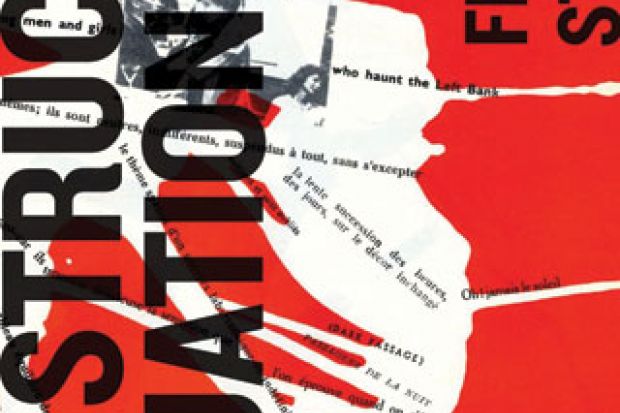The Situationists formed in 1957, found their métier as inspired provocateurs during the insurrectionary events of May 1968 in Paris, and disbanded in 1972. At any one time, Frances Stracey reports, the Situationist International (SI) averaged 10 to 20 members. In total, it comprised 63 men, seven women and one transgendered person, from 16 different countries. Membership was unstable. The records show 19 resignations, two “scissionists” and 45 exclusions. The guru of the SI, Guy Debord, its secretary and strategist, philosopher and disciplinarian, was hot on exclusions. The grounds were various: thought crimes (“I reproach you for having accepted…several ideas that are stupid”), misdemeanours (“sickening arrivisme”), or the category errors of the chronically misled (“mystical cretins”).
The intellectual fascination of the movement has always exceeded its paid-up subscription. Moreover, the Situationists were not idle dreamers. However much they were dedicated to the dérive (the drift, or the ethic of drifting), defined in the SI bulletin as “a transient passage through various ambiences”, and to the joys of “psychogeography” (neatly captured by McKenzie Wark as more intoxicant peregrination than participant observation), they were also committed to action – far-reaching action. The project of the SI was “to construct a new revolutionary praxis of life”, as Stracey has it. The primary task of this book – painstakingly brought to press following the author’s death in 2009 – is to explain, or rediscover, what this meant to the Situationists and what it means to us, now.
She reminds us of a key 1957 text that emerged from its founding conference, “Report on the Construction of Situations and on the Situationist Tendency’s Conditions of Organization and Action”. This proposed a search for revolutionary forms that would be collective, creative events, in which life would be lived differently – artistically, one might say – unlike the pervasive alienation and banalisation characteristic of “the society of the spectacle”, in Debord’s celebrated coinage, in his Das Kapital for a new generation, as Stracey puts it, published 10 years later in 1967. Here, in a classic demonstration of the Situationist gambit of détournement (to detour, to hijack, to lead astray, to appropriate), Debord détourned Marx: commodities turned into spectacles. “The whole life of those societies in which the modern conditions of production prevail presents itself as an immense accumulation of spectacles. All that was directly lived has become mere representation.”
Stracey turns another trick. The standard translation of this famous passage is wanting, she points out. The sense of the original is more contingent: “All that was directly lived is diverted in a representation.” It is not lost and gone for ever. More possibilities exist, given the will and the imagination to find them. Diversion implies reversion; it can be decried, disputed, perhaps even détourned.
For the SI, therefore, the challenge was to create new forms of action to combat the society of the spectacle. Stracey underlines the striking point that this endeavour had its origins in a double failure – the failure of preceding avant-garde movements to change the world through the art they espoused (and their decay into “decorative and theatrical forms of radicalism”), and the failure of revolutionary communism. The Situationists stood against that history. They sought to transcend their predecessors – lumped together derisively as “neo-dadaists” – and at the same time to conjure a more inclusive proletariat of all the “order-takers” as opposed to the “order-givers” of society. Art and politics marched hand in hand. The Situationists talked big, and thought big; yet they never quite slipped the bonds of the past. “Neither Paradise, nor the end of History,” wrote Debord in 1958. “We will have other misfortunes (and other pleasures), that’s all.”
SI strategy was defined in terms of “constructed situations”, the formulation that gives this book its title and the thrust of its argument. The constructed situation was a gamble, an unpredictable mix of misfortunes and pleasures, which might take many different forms, from rioting to writing, psychology to graffiti, artwork to what Stracey calls Gesamtlebenswerk, a new model for a “total-work-of-life”. Constructed Situations is a practised anatomy of that quixotic project. If it is not quite the new kind of history Stracey hoped to write, it is perhaps the most penetrating inquiry into Situationist strategy yet to appear. Despite herself, it is also a fond lament.
Constructed Situations: A New History of the Situationist International
By Frances Stracey
Pluto Press, 200pp, £63.00 and £15.00
ISBN 97807453358 and 5261
Published 20 October 2014





